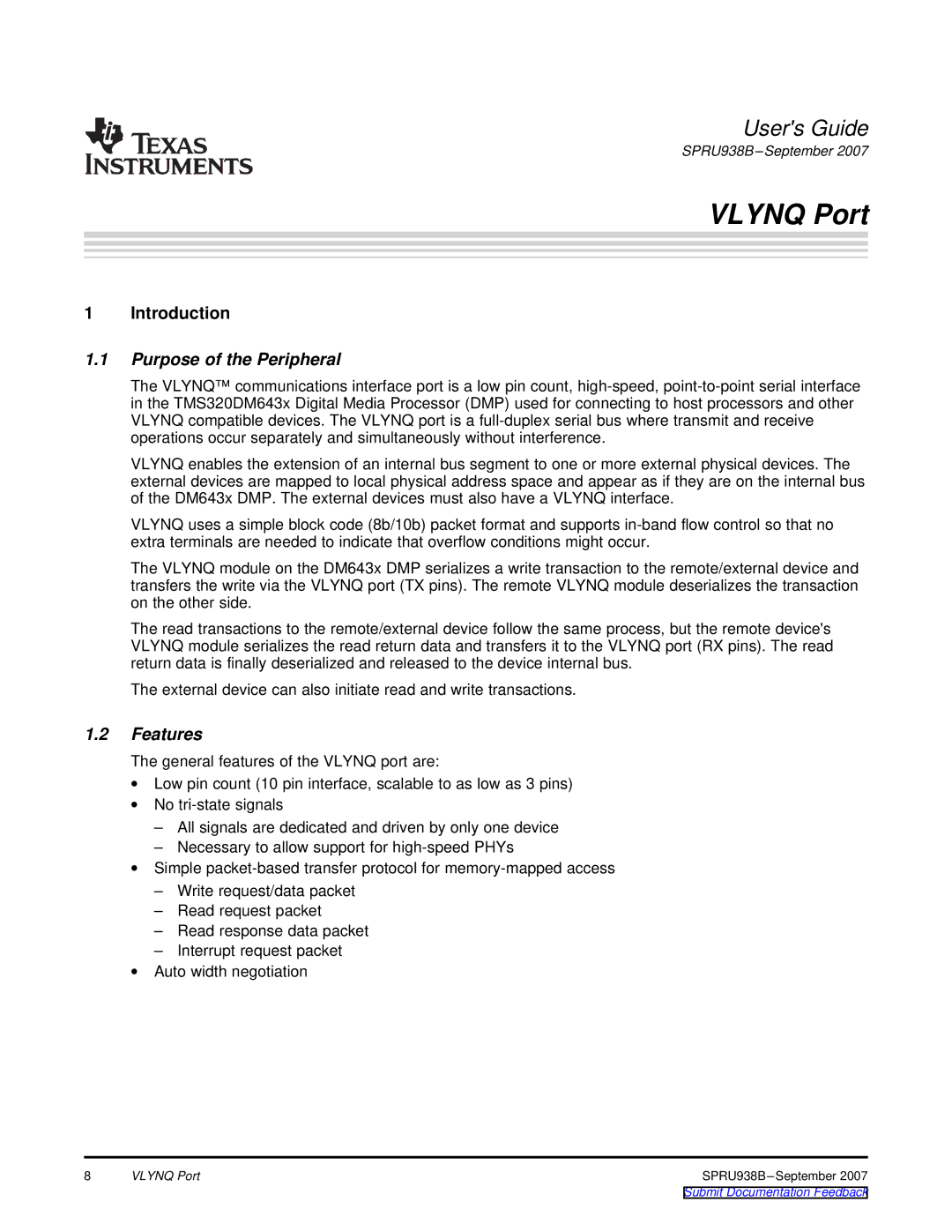
User's Guide
SPRU938B – September 2007
VLYNQ Port
1 Introduction
1.1Purpose of the Peripheral
The VLYNQ™ communications interface port is a low pin count,
VLYNQ enables the extension of an internal bus segment to one or more external physical devices. The external devices are mapped to local physical address space and appear as if they are on the internal bus of the DM643x DMP. The external devices must also have a VLYNQ interface.
VLYNQ uses a simple block code (8b/10b) packet format and supports
The VLYNQ module on the DM643x DMP serializes a write transaction to the remote/external device and transfers the write via the VLYNQ port (TX pins). The remote VLYNQ module deserializes the transaction on the other side.
The read transactions to the remote/external device follow the same process, but the remote device's VLYNQ module serializes the read return data and transfers it to the VLYNQ port (RX pins). The read return data is finally deserialized and released to the device internal bus.
The external device can also initiate read and write transactions.
1.2Features
The general features of the VLYNQ port are:
∙Low pin count (10 pin interface, scalable to as low as 3 pins)
∙No
–All signals are dedicated and driven by only one device
–Necessary to allow support for
∙Simple
–Write request/data packet
–Read request packet
–Read response data packet
–Interrupt request packet
∙Auto width negotiation
8 | VLYNQ Port | SPRU938B |
|
| Submit Documentation Feedback |
